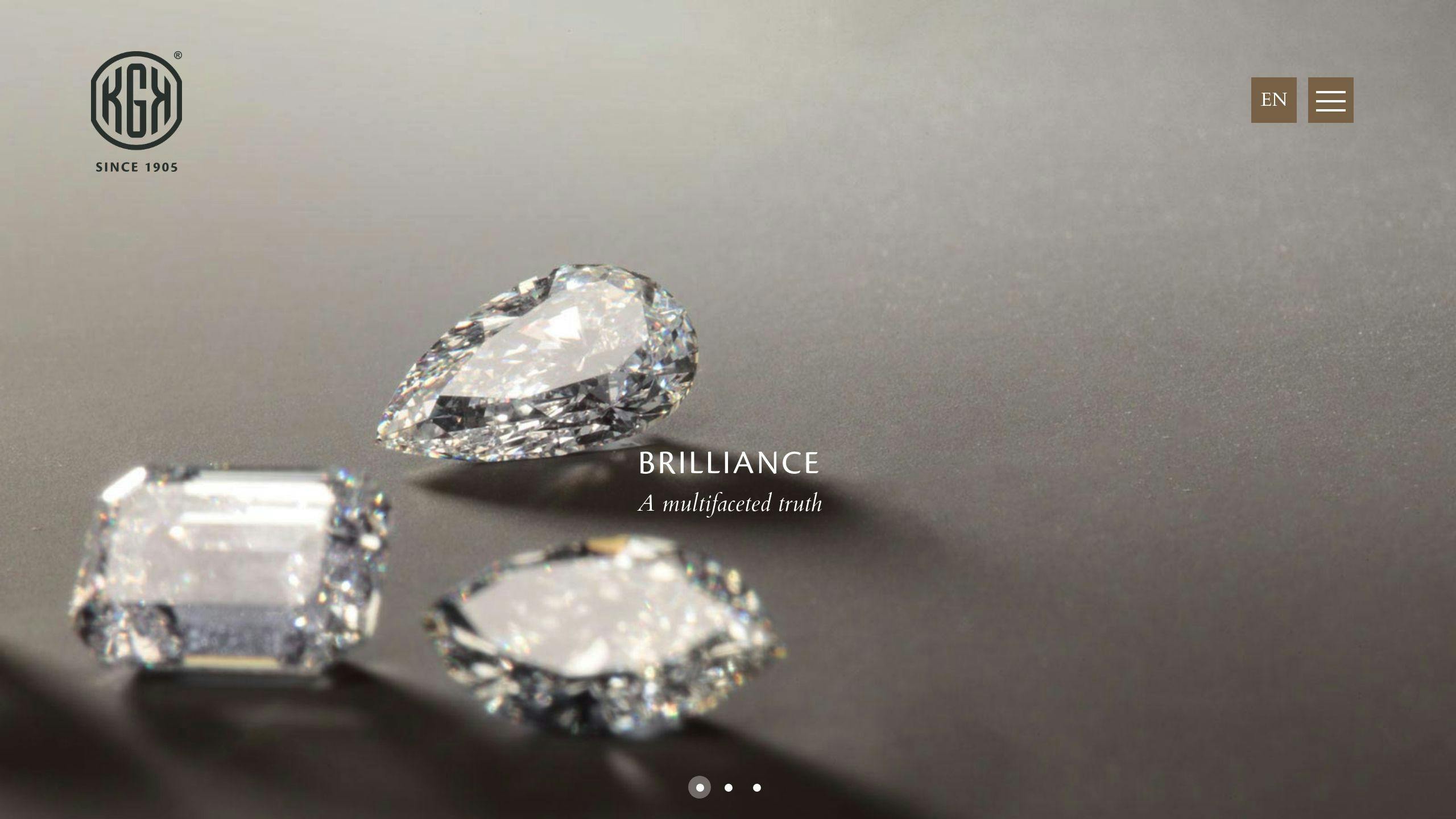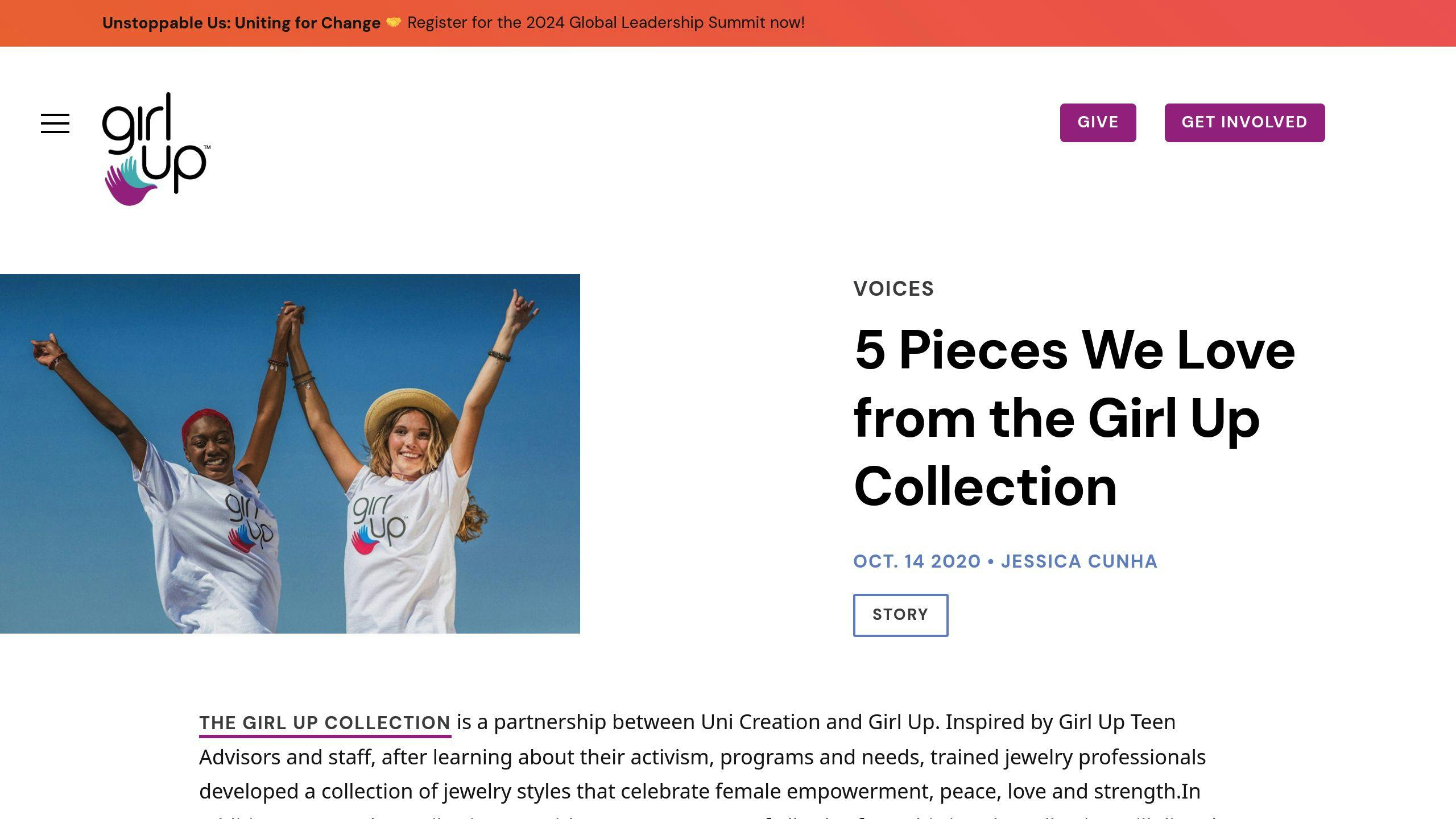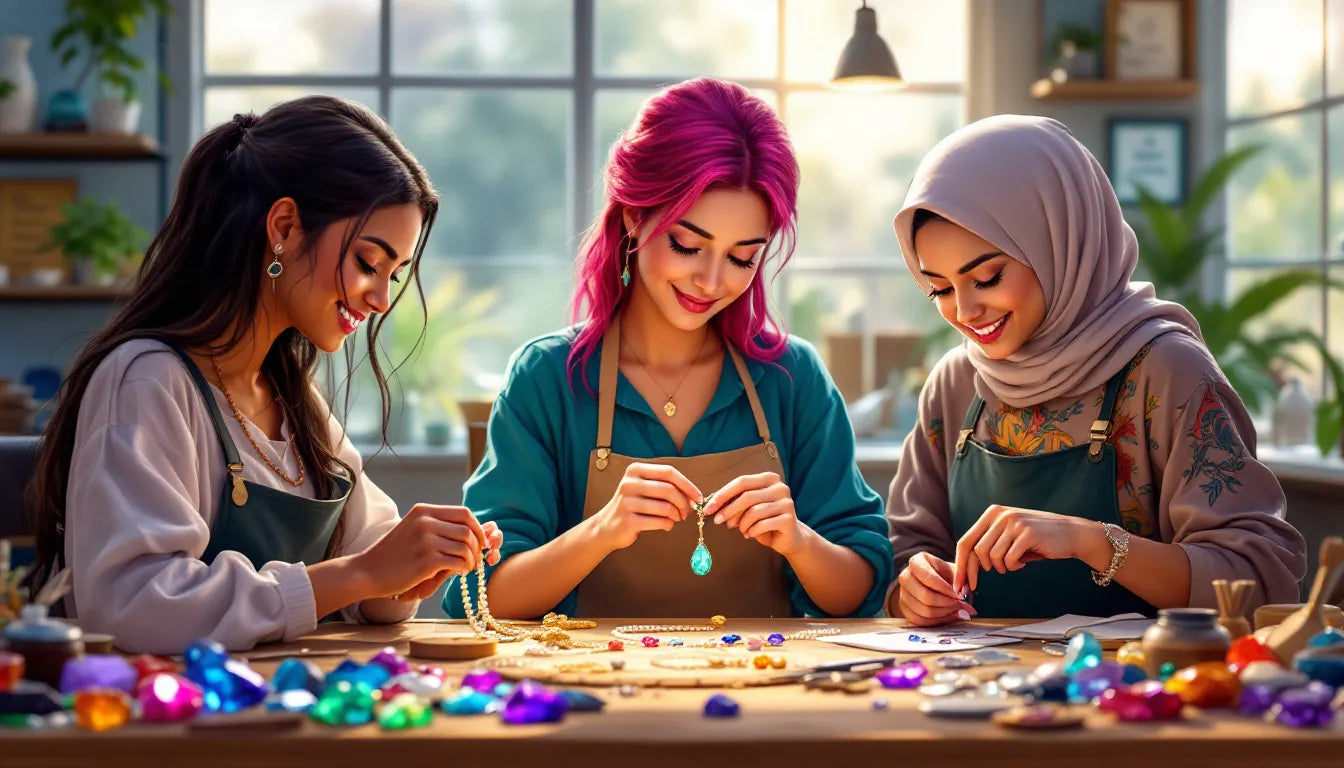The jewelry industry has a major gender problem:
- Women drive 90%+ of jewelry demand but rarely lead companies
- 49% of workers face gender discrimination
- 23% deal with sexual harassment
- 38% see pay gaps
- Most owners are unaware of these issues
Key challenges for women in jewelry:
| Challenge | Details |
|---|---|
| Pay gap | Women earn 81¢ for every $1 men make |
| "Boy's club" culture | Sexist comments, doubts about skills |
| Limited advancement | Only 13 of 50 top industry leaders are women |
| Workplace issues | 50% face hostile environments, 23% sexual harassment |
Why it's hard to fix:
- Women fear job loss or backlash if they speak up
- 52% of workers don't know company gender policies
- 44% of owners have no written policy
Effects on the industry:
- Missed opportunities (women drive 90% of demand)
- Wasted talent
- Financial losses from pay gaps and lack of promotions
- Designs that miss the mark
How to improve:
- Create clear anti-discrimination policies
- Offer gender awareness and leadership training
- Support women through mentoring and funding
- Collaborate on industry-wide initiatives
Buyers can help by choosing brands that support equality and asking questions about gender practices.
The jewelry industry must act now to close the gender gap and unlock major benefits in sales, innovation, and ethical practices.
Related video from YouTube
Current Gender Imbalance
The jewelry industry has a big problem: its workforce doesn't match its customers. This mismatch is clear in both retail and manufacturing.
Women buy over 90% of jewelry. But they're not well-represented in leadership or sales:
- In LA and NYC diamond districts, only 12-16% of sales staff are women.
- The JCK "Power Base List 2015" had just 13 women out of 50 people.
Manufacturing tells a similar story:
| Role | Women | Men |
|---|---|---|
| Jewelry Makers | 76.8% | 23.2% |
| Leaders | 31.7% | 68.3% |
Women make most of the jewelry but often do lower-skilled work. They earn 81¢ for every $1 men make in the industry.
Many bosses don't see the problem. In a Women's Jewelry Association survey:
- 49% of workers said they faced gender discrimination
- Only 7% of owners thought it was an issue
Women are buying more jewelry for themselves - $43 billion in 2017. But many stores still focus on male buyers. Jennifer Farnes of Revolution Jewelry Works says:
"Many women in their 40s and 50s are coming in with gifts they've received over the years, saying, 'He bought me all of this jewelry and I don't like any of it.'"
This shows why we need more women making decisions about jewelry.
Iris Van der Veken, from the Watch & Jewellery Initiative 2030, puts it simply:
"Women drive demand for more than 90% of the world's jewelry."
Fixing this imbalance isn't just fair - it's smart business for the jewelry industry.
2. Challenges for Women in Jewelry
Women in jewelry face tough obstacles. Let's break them down:
2.1 Money Issues
The pay gap is real:
- Women make 81 cents for every man's dollar
- Sterling Jewelers faced a lawsuit over pay discrimination
This gap hits women's wallets and careers hard.
2.2 Social Hurdles
The "boy's club" vibe makes it tough for women. They deal with:
- Sexist comments
- Doubts about their tech know-how
- Dismissal of their leadership skills
Aviva K., a diamond wholesaler, puts it this way:
"It's like walking a tightrope when I have to make an on-the-spot decision to stand my ground."
2.3 Career Growth Problems
Women struggle to climb the ladder:
- Only 13 of 50 people on JCK's "Power Base List 2015" were women
- 30% say they've been denied equal advancement chances
Fewer women at the top means fewer role models for up-and-comers.
2.4 Workplace Concerns
The Women's Jewelry Association survey uncovered some ugly truths:
| Issue | Percentage Affected |
|---|---|
| Hostile work environment | 50% |
| Sexual harassment | 23% |
| Unwanted sexual advances | 16% |
These issues make work life tough for women.
Many stay quiet, fearing backlash or career damage. This silence makes fixing things harder.
3. Difficulty in Fixing Inequality
The jewelry industry has a big problem: women often don't speak up about unfair treatment. This silence makes it tough to tackle gender inequality.
Why don't women speak up? Two main reasons:
- They're afraid of losing their jobs.
- They worry about backlash from coworkers or bosses.
Take Sandra Sargent's case at Jared the Galleria of Jewelry. She reported a security guard's bad behavior and got fired. No wonder many women stay quiet.
Check out these eye-opening stats:
| Issue | Employees Affected | Owners Aware |
|---|---|---|
| Hostile work environment | 50% | 9% |
| Sexual harassment | 23% | 5% |
| Unwanted sexual advances | 16% | 3% |
| Pay disparity | 38% | 2% |
| Denied advancement | 30% | 2% |
See the gap? Bosses are clueless about what's really going on.
It gets worse in small jewelry companies:
- 52% of workers don't know their company's gender policies
- 44% of owners admit they have no written policy
No clear rules? Even harder for women to speak up.
"We need to recover lost ground and re-commit to efforts with renewed zeal and vigor." - Iris Van der Veken, Executive Director of the Watch & Jewellery Initiative 2030
So, what's the fix? The industry needs to:
- Make it safe for women to report problems
- Train bosses to spot and stop unfair treatment
- Create clear policies in all companies, big and small
Bottom line: Until women feel safe speaking up, the jewelry industry will keep struggling with fairness.
4. Effects of Gender Inequality
Gender inequality in jewelry isn't just unfair - it's bad for business. Here's why:
4.1 Industry-Wide Effects
The jewelry world has a big problem: the people making and selling jewelry don't match the people buying it. This causes issues:
- Missed opportunities: Women buy over 90% of jewelry, but men run most companies. See the problem?
- Wasted talent: Many women in jewelry work lower-level jobs, even when they could do much more.
-
Money lost: Gender inequality costs the industry big time:
Problem Impact Pay gap 38% of women affected No promotions 30% of workers hit COVID income loss $800 billion for women globally - Boring designs: With fewer women leaders, jewelry designs might miss the mark.
- Bad PR: Remember the Sterling Jewelers lawsuit? That's not a good look.
-
Slow change: At this rate, we're looking at:
- 140 years for equal workplace leadership
- 40 years for equal representation in governments
These problems affect everyone, from big companies to small miners. In fact:
"About 100 million people work in or depend on small-scale mining, often in tough conditions with low pay and safety risks."
Women often get the worst of it.
The industry's tried to fix things, but mostly just in stores and corporate offices. That's not enough. We need change everywhere, from mines to manufacturing.
Iris Van der Veken from the Watch & Jewellery Initiative 2030 says it best:
"We need to recover lost ground and re-commit to efforts with renewed zeal and vigor."
To move forward, the jewelry world must:
- Look at gender issues throughout the supply chain
- Create clear anti-discrimination policies
- Offer better training, especially for small businesses
- Make it safe to report problems
- Get more women into leadership roles
It's time for the jewelry industry to shine - for everyone.
sbb-itb-d0b3b91
5. Ways to Improve
The jewelry industry can tackle gender inequality. Here's how:
5.1 Better Rules
Companies need clear policies:
- Fair hiring practices
- Strong anti-discrimination rules
- Equal pay for equal work
Only 21% of Responsible Jewellery Council (RJC) members have formal gender equality policies. That's a big problem.
5.2 Learning and Training
Education is crucial:
- Gender awareness training for all staff
- Leadership programs for women
- Unconscious bias training for hiring teams
The RJC says this can help more women become leaders.
5.3 Industry Teamwork
Working together speeds up progress:
| Action | Benefit |
|---|---|
| Joint initiatives | Fix supply chain issues |
| Equality awards | Showcase best practices |
| Shared goals | Set industry-wide targets |
The Watch & Jewellery Initiative 2030 says teamwork is key for real change.
5.4 Support for Women
Direct help matters:
- Mentoring programs
- Women's networking groups
- Funding for women entrepreneurs
Some companies are stepping up. Alex and Ani designs jewelry to inspire women, like their "Fearless Empowerment Necklace."
"We need to recover lost ground and re-commit to efforts with renewed zeal and vigor." - Iris Van der Veken, RJC Executive Director
The message is clear: The jewelry industry must act NOW to close the gender gap.
6. Success Stories
The jewelry industry is making strides in gender equality. Here's how:
De Beers: Boosting Women Entrepreneurs

De Beers is all in on supporting women:
- Extended UN Women partnership for 5 years
- AWOME program: 1,000+ female entrepreneurs trained, 50 local trainers qualified
- Goal: 10,000 female micro-entrepreneurs by 2030
- 50+ STEM scholarships for young women
- Science camp for 30 high school girls
- WomEng partnership: 900+ girls in workshops
"Our commitments... to invest an additional $3 million to continue supporting women entrepreneurs in our host countries in southern Africa are further demonstration of our resolve to be a positive force for progress, and for change." - Cleaver, De Beers Representative
KGK Group: Women at the Top

KGK Group is shaking things up:
- More women in decision-making roles
- Multi-generational women workforce
- Focus on hiring women leaders
Results:
| Area | Impact |
|---|---|
| Sustainability | Women driving change |
| Equality | More women in key roles |
| Diversity | Varied perspectives |
Their motto: "Love, Respect, and Protect women."
Girl Up Collection: Jewelry That Matters

Girl Up Collection is making waves:
- Supports UN's Girl Up initiative
- $27+ million raised for girls' programs
- 75,000 girl leaders in 120 countries reached
UNI Creation, the brand behind it:
- Six-figure donation to Girl Up
- 5% of all sales go to programs
"Each piece is symbolic of our movement, and highlights strength, compassion, and togetherness." - Melissa Kilby, Executive Director of Girl Up
Women-Owned Jewelry Stores
Women are taking the lead:
- Cathy Calhoun (Calhoun Jewelers): Beat supplier bias at shows
- Chae Carter (Carter's Jewelry): Took over at 20, hit $4 million in sales, all-female staff
"Women bring to the industry a natural affinity for trends, fashion and detail." - Cathy Calhoun
These stories show real change. With more backing, women are reshaping jewelry from within.
7. How Buyers Can Help
You can make a big difference in the jewelry industry. Here's how:
- Pick brands that support equality
Look for companies that put women in charge and throughout their supply chain. KGK Group, for example, hires women in key roles and supports a multi-generational female workforce.
- Buy ethically sourced jewelry
This ensures fair wages and safe conditions, especially for women in mining. Some brands doing it right:
| Brand | What They Do |
|---|---|
| Mejuri | Uses certified responsibly sourced or recycled gold |
| Brilliant Earth | Offers traceable diamonds |
| Catori Life | Plants trees with every purchase |
- Support women-owned businesses
Like Soru, Shiffon, and Logan Hollowell. They use sustainable practices and often give back to women's causes.
- Ask questions
Don't be shy. Ask companies about their gender equality and sourcing practices. Your interest can push for more transparency.
- Go for fair trade
Fair trade jewelry ensures good working conditions and fair pay. Try these:
- Give Hope Bracelet (Starfish Project)
- Esperanza Sterling Ring (Fair Anita)
- Restoring Justice Hoops (Made for Freedom)
These choices support survivors of trafficking and violence.
Your buying power can drive real change. Choose wisely!
8. Looking Ahead
The jewelry industry is at a crossroads. By tackling gender inequality, it can unlock major benefits:
Economic Growth: Women drive 90% of jewelry demand. Empowering them could boost sales and innovation. The self-purchase jewelry market hit $43 billion in 2017, growing 4% that year.
Talent Expansion: Removing barriers for women brings fresh ideas. Chandevi Mali's story shows how training can empower women to run businesses and support families.
Ethical Sourcing: Women often champion ethical practices, aligning with consumer demand. Brands like Mejuri and Brilliant Earth already use responsibly sourced materials.
Market Insight: Women make up 81% of jewelry purchasers. More women in leadership helps companies understand their core market better.
Better Working Conditions: Addressing gender issues in artisanal small-scale mining (ASM) could help millions. About 100 million people work in or rely on ASM, often in poor conditions.
Brand Loyalty: Millennial and Gen Z consumers, especially women, drive the ethical consumer movement. Companies championing equality are likely to win their loyalty.
To achieve these benefits, the industry must act:
1. Set Clear Goals
The Responsible Jewellery Council (RJC) wants all members RJC-certified by 2025, including gender equality commitments.
2. Invest in Training
Programs like Nepal's Business Service Centre show how skill-building can empower women economically.
3. Promote Women Leaders
Brands like KGK Group are leading by example, placing women in key roles throughout their supply chain.
4. Collaborate Across the Industry
Iris Van der Veken of Watch and Jewellery Initiative 2030 puts it well:
"We need a truly multidimensional and multi-sectoral approach. That's why I so strongly believe in partnerships."
The jewelry industry has a golden opportunity. By embracing gender equality, it can shine brighter than ever before.
9. Wrap-up
The jewelry industry has a problem. Women drive 90% of demand but face major workplace hurdles. This mismatch hurts everyone.
What's going on?
- Women get paid less
- They can't move up
- Work environments are hostile
- Sexual harassment is common
Here's the kicker: many owners don't see it. Check out this gap from a Women's Jewelry Association survey:
| Issue | Employees Say | Owners Notice |
|---|---|---|
| Discrimination | 49% | 7% |
| Can't advance | 30% | 2% |
| Hostile environment | 50% | 9% |
| Pay gaps | 38% | 2% |
| Sexual harassment | 23% | 5% |
Yikes.
So, how do we fix this? It's on everyone:
Companies need to step up with clear policies, training, and women leaders.
Industry groups should offer resources and set standards.
And you, the consumer? Support brands that do right by women.
"We need a truly multidimensional and multi-sectoral approach. That's why I so strongly believe in partnerships." - Iris Van der Veken, Watch and Jewellery Initiative 2030
At this rate, full equality could take 300 years. But change CAN happen faster. If we all pitch in, we can create a fairer jewelry industry for everyone.


Leave a comment